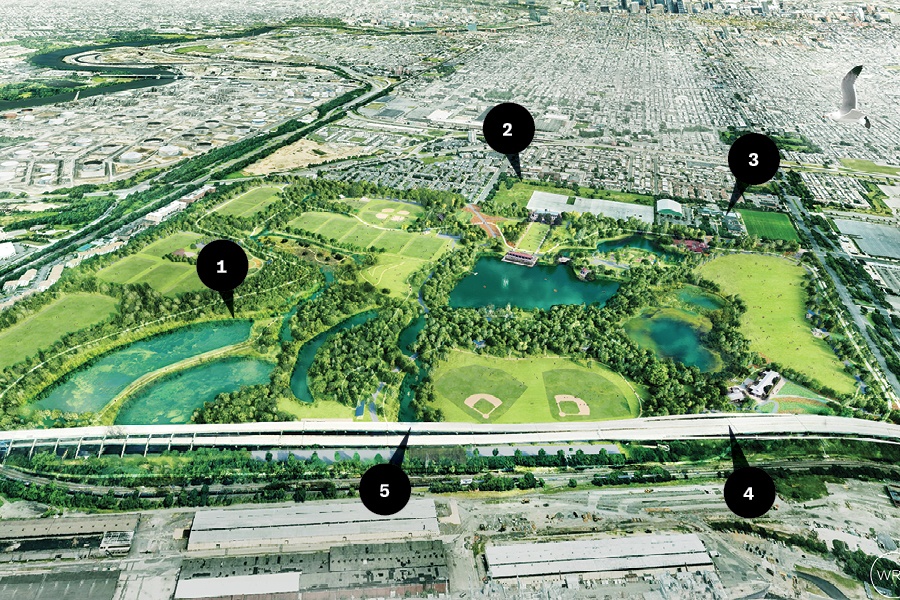The City’s $200M Plan to Save South Philly’s FDR Park
Here are the five big changes coming to help preserve the often-flooded park.

FDR Park master plan. Rendering courtesy WRT Design
This article is one piece of a bigger story on climate change in Philadelphia. You can read the full story here.
Philly’s sole estuary park — it’s that South Philly one near the stadiums — is often underwater. But “rather than see the city walk away from a tremendously important asset,” says Allison Schapker, director of capital projects for the Fairmount Park Conservancy, “we thought, ‘How can we take parts of the site and let them be wet?’” Enter a recently unveiled $200 million plan, which — once funding comes through — will divide the 348-acre swath into wet and dry zones. Here, five items on the to-do list.
1. Expand the ecological core.
The park’s bodies of water would increase by 17 acres, allowing for lakes, wetlands, and a marsh area. Soil excavated from those sites will be used to build a hill that will offer skyline views. “The things we build will be resilient — instead of asphalt paths, we’ll have boardwalks,” says Schapker.
2. Repurpose the urban edge.
The amenities (athletic fields, playgrounds, picnic areas) will be moved to elevated edges of the park that will be less prone to flooding.
3. Construct a new elevated maintenance building.
This building will hold vital park equipment and vehicles. Placing it on an elevated site will keep it — and the park — operational.
4. Catch storm-water runoff.
The park currently experiences a massive incursion of storm-water runoff from I-95, Broad Street, and areas north of Pattison Avenue, and that runoff pollutes the ponds. The plan would create green storm-water infrastructure with natural landscaping, native plants and rain gardens.
5. Replace the tide gate.
Water from the Delaware River finds its way into FDR Park. Think of it as a giant bathtub. The tide gate is the plug that lets water through the drain, regulating the ecosystem. Sadly, it’s broken. A new gate will help establish the tidal wetlands that will become crucial to the park’s adaptation.
Published as “We See You, FDR Park” in the “What Can a City Do About Climate Change” article in the November 2019 issue of Philadelphia magazine.


